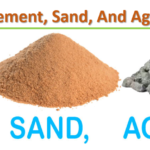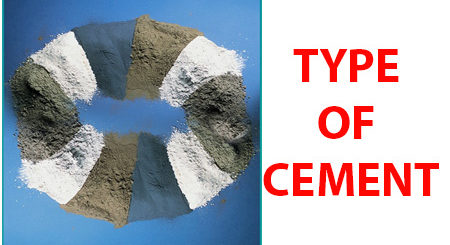CEMENT INGREDIENTS AND THEIR FUNCTIONS
Ingredients of Cement and Their Functions
Cement is a binding material called a binding agent. We know cement is the main ingredient of building materials. Cement is a commonly used binding material in construction. The cement is obtained by burning a mixture of calcareous (calcium) and argillaceous (clay) material at a very high temperature and then grinding the clinker so produced to a fine powder. Cement Ingredients,
To understand the composition of cement, engineers need to understand the functionality of cement ingredients.
COMPOSITIONS OF CEMENT:
There are eight major ingredients of cement as mentioned below:
| INGREDIENT | PERCENTAGE IN CEMENT |
| Lime | 60 – 65 |
| Silica | 17 – 25 |
| Alumina | 3 – 8 |
| Iron Oxide | 0.5 – 6 |
| Magnesia | 1 – 3 |
| Sulfur Trioxide | 1 – 3 |
| Alkaline | 0 – 1 |
| Calcium Sulfate | 0.1 – 0.5 |
FUNCTIONS OF CEMENT INGREDIENTS:
The main ingredients used in the manufacturing of cement and a brief discussion about the contribution of different cement ingredients are as below:
- Lime: The important ingredient in cement is lime also known as calcium Oxide. Lime can be found in calcareous, limestone, shale etc. The proportion of lime in cement is 60 – 65% for its strength. The excess proportion of lime in cement make it unsound as well as cement expansion and decomposition occur. A lower proportion of lime also decreases strength and setting time.
- Silica: The chemical name of Silica is silicon dioxide. The proportion of silica in cement is 17 – 25% which contributes to the strength in cement due to the formation of dicalcium and tricalcium silicates. The silica is present in water, argillaceous soil etc. The excess proportion of silica in cement give more strength to cement but decreases the setting time of the cement.
- Alumina: Aluminium Oxide also known as Alumina which imparts a quick setting quality of the cement. The proportion of Alumina in cement is 3 – 8%. Alumina acts as a flux and reduces the temperature of clinker which results in the reduction of strength. High temperature is essential for the formation of a suitable type of cement hence alumina should not be used in excess quantity to maintain a high temperature.
- Iron Oxide: Iron Oxide can be extracted from fly ash, iron ore, scrap iron etc. The main function of Iron Oxide is to impart colour, hardness and strength to the cement. The proportion of iron oxide in cement should be 0.5 – 6%. At high temperatures, Iron oxide reacts with calcium and aluminium to form tricalcium alumino-ferrite which helps cement in hardness and strength.
- Magnesia: It is also known as magnesium oxide. The required quantity of magnesia is 1 – 3%. If magnesia is added in small quantities, it imparts hardness and colour to the cement; however, the excess quantity of magnesium oxide affects the soundness of cement.
- Sulfur Trioxide: The proportion of sulfur trioxide is 1 – 3%. It should be added in less quantity (less than 2%) to make cement sound. Excess sulphur trioxide reduces the strength of the cement and makes it unsound.
- Alkaline: Alkalis like soda and potash should not be added more than 1%. Excess quantity can cause alkali-aggregate reaction, efflorescence, staining etc.
- Calcium Sulfate: Gypsum is the source of calcium sulfate which is found in concrete. It ranges from 0.1 – 0.5%. Cement-based calcium sulfate increases the initial cement setting time but slows down the setting action of cement.
Also, read more useful or very important topics on Civil Engineering, Click Below Topics










Elevate your home with the unparalleled quality of Birla White Cement! 🏡✨ Discover the Birla White for a brighter future in construction. 🛠️ #BirlaWhite #Whitecement # wallputty